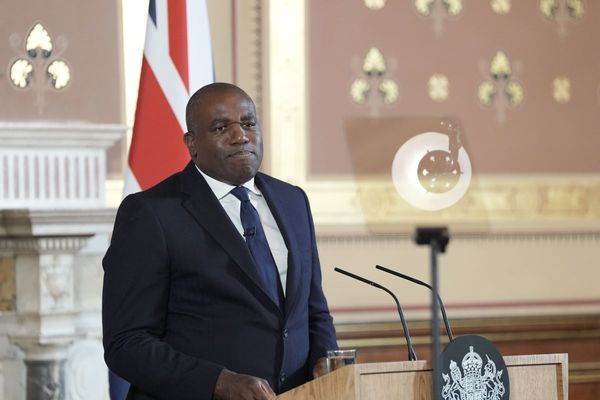
Nothing could be more rugged than the archive images of the mountaineer George Mallory preparing to tackle Everest in stout tweed suit and brown boots – and nothing more skittish than his newly discovered letters to the writer and leading member of the Bloomsbury set, Lytton Strachey. “What a wicked old sodomite you are,” Mallory wrote fondly in April 1910, “with your Antonious and your Rupert and your beautiful young Lamb ... You might give a message of respectful affection to Rupert – is that permitted?”
The 34 letters, revealed for the first time from among Lytton Strachey’s archive, will be auctioned at Bonhams in June, valued at up to £60,000.
Mallory, a Fabian, was friends with many of the Bloomsburies, and was painted by Duncan Grant. The letters are gossipy, flirtatious, and often explicitly gay. Mallory meets at Charterhouse “an ancient amour of mine ... a young man of 17 but still only just past the moment of puberty & with a fair skin & fair curly hair & red enticing lips! What will happen? His mother wrote me a confiding letter asking me to take care of him”.

However, Matthew Haley, head of books and manuscripts at Bonhams, thinks Mallory is sometimes just being whimsical to amuse Strachey. He writes “I have an odd prejudice against climbing in dress clothes”, and in another letter imagines himself in the future: “I, in about 1930, have stood my trial for sodomy in defence of my conduct and am playing altogether a very heroic part.”
Strachey was knocked for six by Mallory on sight. “Mon Dieu! George Mallory!”, he wrote to Vanessa Bell, Virgina Woolf’s sister, (in a previously published letter, not in the sale) after their first meeting. “My hand trembles, my heart palpitates ... he’s six foot high, with the body of an athlete by Praxiteles and a face – oh incredible – the mystery of Botticelli, the refinement and delicacy of a Chinese print ...”
Mallory was then 23, and Strachey 29. Mallory may have been delicately rebuffing him when he wrote: “I myself have found that it is the young always whom I desire (I believe this to have been your experience also).”
“Mallory was so gorgeous, and Strachey perhaps not to everyone’s taste,” Haley said, “but I should imagine Mallory was flattered by such admiration wherever it came from.”

He does not believe there was ever a physical relationship between them. “The very camp tone is quite typical of letters of the period from these Cambridge circles, where after all there were no women in those days, and there were a lot of them dabbling around in this kind of thing. Things often changed when they left and met some real women.”
The poet Rupert Brooke, regarded by many men and women as the most beautiful human being of his generation, did not attract Mallory. He wrote: “I have I believe after much perplexity discovered what you mean by using the word flirtatious: but I am not in the least interest in that quarter, & should be the last to discourage any attempt upon him.”
In 1909, he wrote from France commiserating over the grim weather in Cambridge, but suggested the city had many consolations. “You may perhaps find some compensation for living in Cambridge in the excellent opportunities it affords for a strenuous intellectual life; it is a great advantage too that there should be so many young men from who to choose suitable and worthy companions.”
In 1914, he wrote to Strachey of his impending marriage to Ruth Turner, a happy union which would produce two daughters and a son.
“It can hardly be a shock to you that I desert the ranks of the fashionable homosexualists (and yet I am still in part of that persuasion) unless you think I have turned monogamist. But you may be assured that this last catastrophe has not happened.
“This sentiment shocks me deeply – considering that I really am to be tied by the conjugal knot & actually to be blessed by the Church of England: but then the truth always is so shocking and probably nobody is monogamous.”
That letter ends “yr. affect George Mallory” with an invitation to dinner, but although letters continued into the 1920s, after his marriage they became more widely spaced, and the friendship was evidently cooling. The last ended “A letter will pursue me to Tibet if you address it Mount Everest expedition c/o Postmaster Darjeeling. Please give my love to Duncan [Grant] when you see him. Yrs. ever George Mallory.”

The man who famously replied “because it’s there” to a journalist who asked why he felt driven to conquer Everest, died on his third attempt on the mountain in 1924.
His body was found there in 1999. He had intended to leave a photograph of his wife on the summit, and the fact that it was not in his pocket was taken by some as proof that he achieved his goal and died on the way back down the mountain. Neither his climbing companion Andrew “Sandy” Irvine, or their camera, a Vestpocket Kodak, which might have supplied proof either way, have ever been recovered.
Strachey, the author of Eminent Victorians, was widely known as gay – and revealed in a recent compilation of his letters to be particularly interested in sado-masochistic sex – but lived for many years with the painter Dora Carrington, who committed suicide after his death in 1932.
Haley expects great interest in the sale from Mallory memorabilia collectors, mountaineering enthusiasts, gay historians and Bloomsbury scholars alike.
“It’s a cache of really great unknown Bloomsbury letters – and there aren’t too many of those about these days.”







